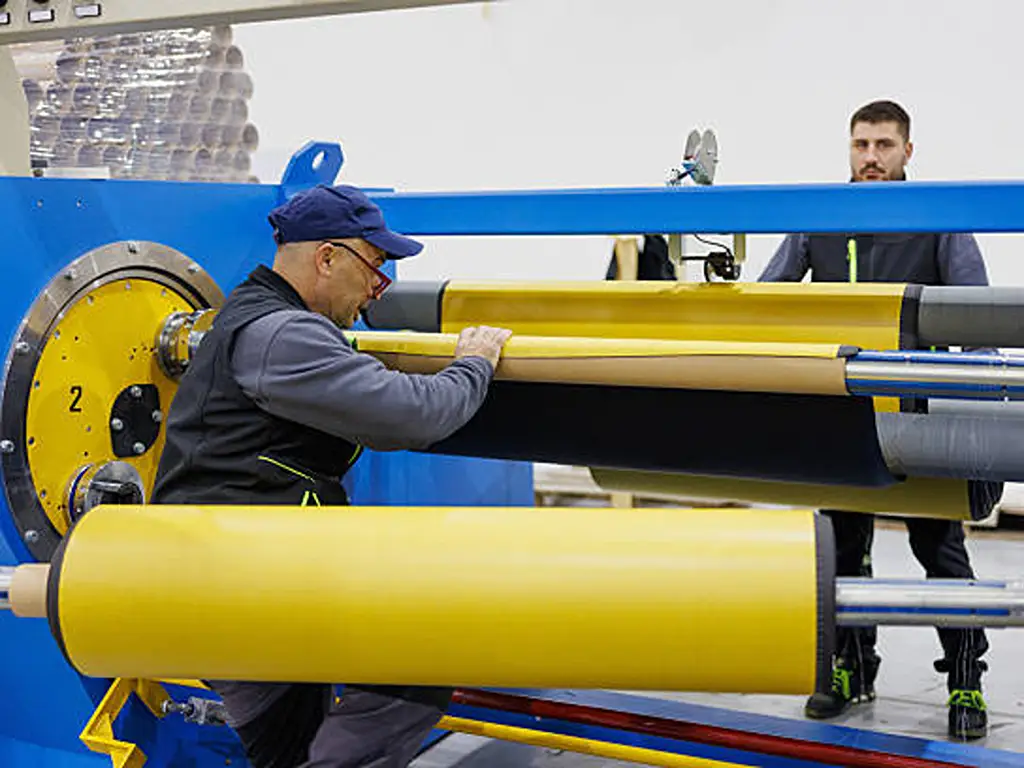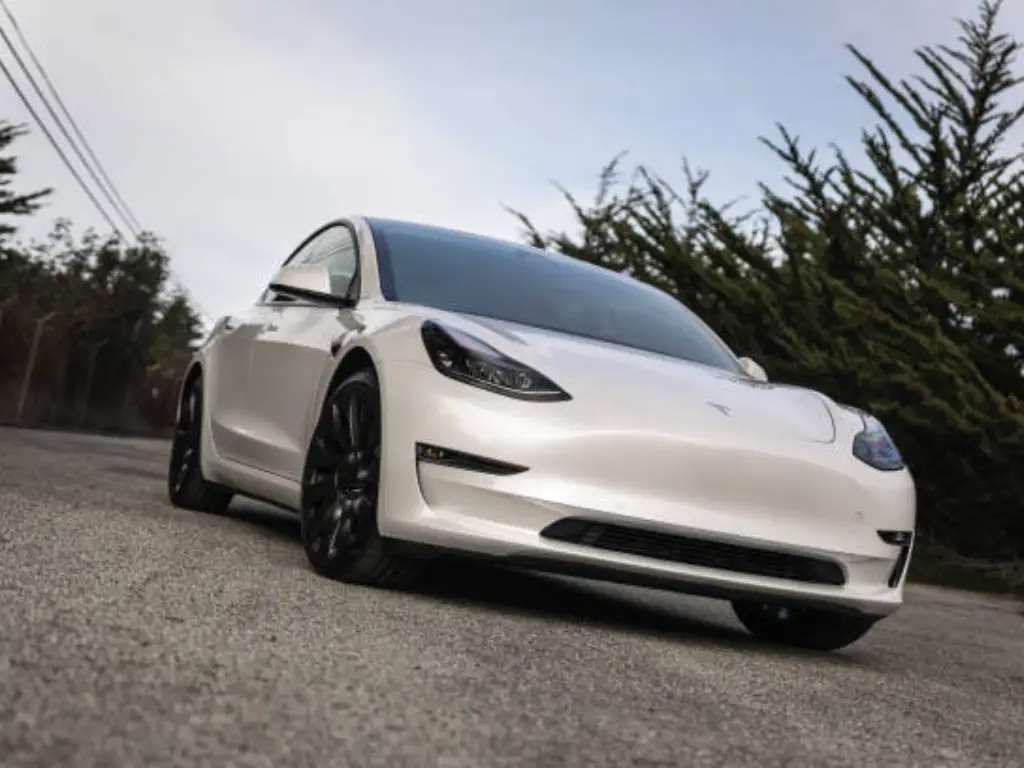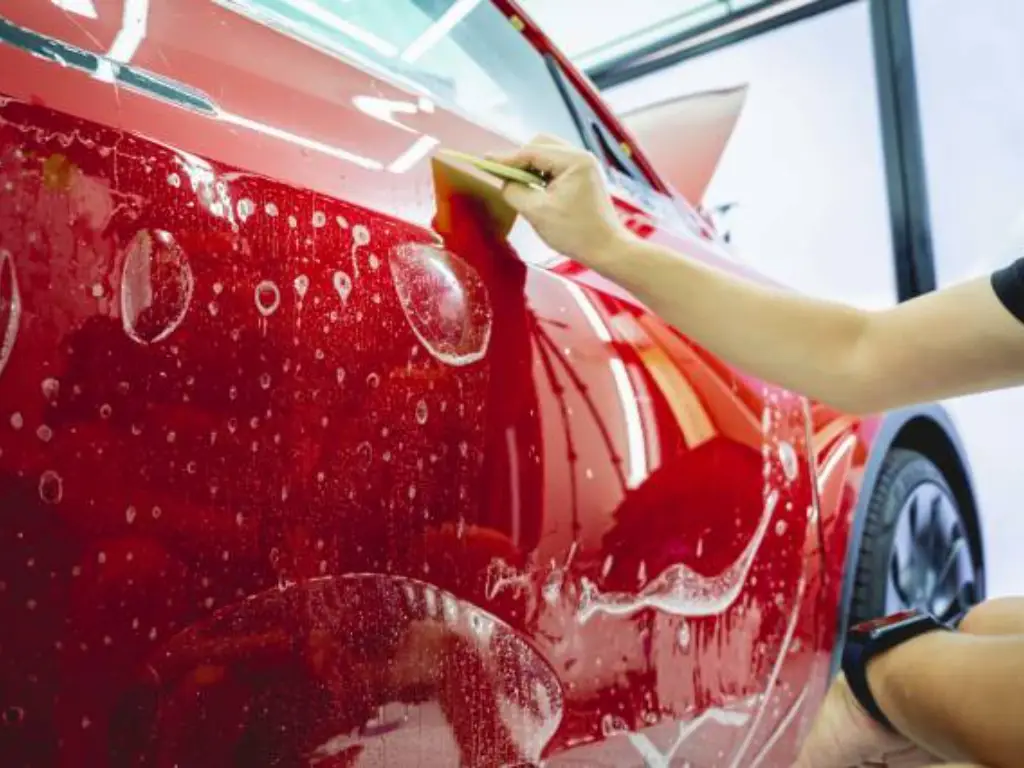The Battle of Black: Shine vs. Subtlety
There are few decisions that can be as influential or as controversial as the finish of the black coating of your vehicle when it comes to customizing the aesthetic of your vehicle. When it comes to car enthusiasts and people who just want to make their ride a little bit better, the choice is usually reduced to an interesting battle between two powerful forces: satin black and matte black. These are not mere shades of black, but are statements in themselves, each with its own weight and character of visual statement. One murmurs elegance with a touch of gloss, the other screams crude, untouched stealth. This is not just a matter of choosing a color, but a matter of choosing the right choice for the personality of your machine, a visual signature that will show your style on every road it will pass.
The charm of a black car cannot be denied, the eternal image of power, beauty, and mystery. However, in this traditional decision there is a subtle world of textures and interaction of light. Matte black has become a phenomenon, with its flat, diffused appearance that appears to absorb light, giving it a harsh, nearly two-dimensional appearance. Satin black, however, is a special middle ground, with a low-key shine that suggests luxury without the over-the-top gloss of a conventional gloss. This paper will take a detailed trip down the rabbit hole of this stylistic war, examining the visual details, the science behind it, and the longevity and maintenance of the same. We will also explore the issue of cost and value, equipping you with the information to make the correct decision. The bottom line is that the winner is not universal, it is personal.
Appearance & Aesthetics: What’s the Difference?
The first and most obvious difference between satin black and matte black is their appearance, their basic aesthetics. This is where personal preference really starts to shape the contour of your decision. Although both are admittedly black, the manner in which they respond to light produces completely different character profiles of a vehicle.
The ideal of non-reflection is matte black. It is a finish that reduces glare, instead of reflecting light. Think of a bit of fine charcoal or a dark shadow. That is the nature of matte black. Its total absence of shine provides a car with a very raw, almost industrial touch, and it is particularly good at showing the raw, unrefined shape of a car. All the sharp folds and violent vents are seen with a clear distinctness, without reflections. It removes traditional gloss, giving vehicles a sneaky, even threatening air. Matte black is an aesthetic that can not be matched by anyone who values minimalism, dramatic contrast, or a visually striking flat appearance. This is where the visual impact of this intense matte vs gloss debate begins.
Satin black, in sharp contrast, brings a restrained glamour, a refined shine that is not quite glittering, but that denies the complete flatness of matte. Imagine the dark, deep shine of black silk, or a dark, unlighted lake. Satin black has a soft, velvet shine that reflects the light in a way that makes the highlights and shadows on the body of the vehicle dynamic, adding a subtle luster. It does not absorb light, it diffuses it softly. This feature is a lovely way of highlighting lines with subtle depth. Satin black has been linked to luxury, subtle performance and contemporary coolness, providing a sophisticated rebellion to conventional gloss. The key to the right finish is how you want your car to appear.

Reflectivity Unpacked: Science Behind the Sheen
The visual difference between satin black and matte black is not just about observation, but it is also about the science of light interacting with the surface of the two materials. It is not merely what you look at that counts, it is how you look at it, and that is the direct consequence of the microscopic texture of the finish.
Reflectivity is in essence the way a surface reflects light. A very reflective surface such as gloss paint has specular reflection, where the light rays are reflected in a single, orderly direction, producing sharp reflections.
Matte black finishes are designed to be low reflective. Their surfaces are textured and uneven microscopically. When light is incident on a matte surface, it is scattered and diffused in many directions, a process known as diffuse reflection. The light is diffused, so the eye sees the surface as flat and non-glossy, with very low light absorption, usually less than 10 percent reflectivity. This excessive diffusion makes matte black appear to be a dead flat, as it absorbs ambient light and reflections are practically non-existent. It focuses more on the form rather than shine, making the car a pure silhouette.
Satin black, however, is a balance between diffuse and specular reflection. It is not as smooth as matte but not as smooth as gloss. This enables scattering and a certain directional reflection. Some of the light is scattered to make it dull, and some of the light is reflected in a slightly directional manner to provide a slight sheen that reflects light on curves. Satin black has a reflectivity of 25-40 percent, which gives a sufficient amount of light play to accentuate vehicle lines and give a three-dimensional effect, but not the blinding glare of high gloss. It is a kind of soft filter, and the light touches its shape.
Durability & Performance: Withstanding the Road
In addition to the aesthetic value, the performance of satin and matte finishes in the face of everyday wear and tear is important. The road is merciless, and it is essential to know how long they will last. Contemporary vinyl wraps, be it satin or matte, are designed to be durable. Good quality films have an outdoor life of 5 to 7 years and even more with proper care and minimum exposure to the sun. They serve as a sacrificial layer to the original paint on your vehicle and provide a great deal of protection against small scratches, typical stone chips, and the constant bombardment of UV rays, protecting against imperfections. This protective film, similar to PPF (Paint Protection Film) in its protective nature, keeps the factory finish underneath safe against environmental degradation, reducing the chances of small paint defects. But, in this common protective ability, there are differences in the visible performance of each finish throughout this life.
Because of their intentionally textured and non-reflective finish, matte black finishes can be surprisingly forgiving in terms of small surface flaws such as light scratches or swirl marks. Since there is no direct reflection to reflect and bring out these flaws, they are not easily seen on a matte surface as they are on a glossy one. A scratch of a hair may be lost in the diffused texture. However, the same texture causes them to be easily visible with oils, grease, and fingerprints; the oils, grease, and fingerprints are absorbed into the microscopic surface, which interferes with the even diffusion of light and results in visible streaks. More stubborn contaminants such as tree sap or bug splatter may also be more difficult to clean, as they stick to the textured surface and may leave so-called ghost marks unless removed quickly, particularly in humid environments where moisture increases adhesion. However, deep scratches or gouges are difficult to fix without leaving a seam.
Satin black finishes, which have a smoother but still low-sheen surface, provide an alternative durability profile. Their surface is less porous and thus they are less likely to visibly display fingerprints and oily smudges than matte finishes. It is usually easier to clean ordinary dirt. But, in fact, due to the fact that they have a slight sheen, deeper scratches or swirl marks may be more visible than on true matte. Any interference with its uniform diffusion of light, as a scratch, can more easily be noticed. The two are naturally resistant to common road factors but require certain maintenance to achieve their maximum estimated life.
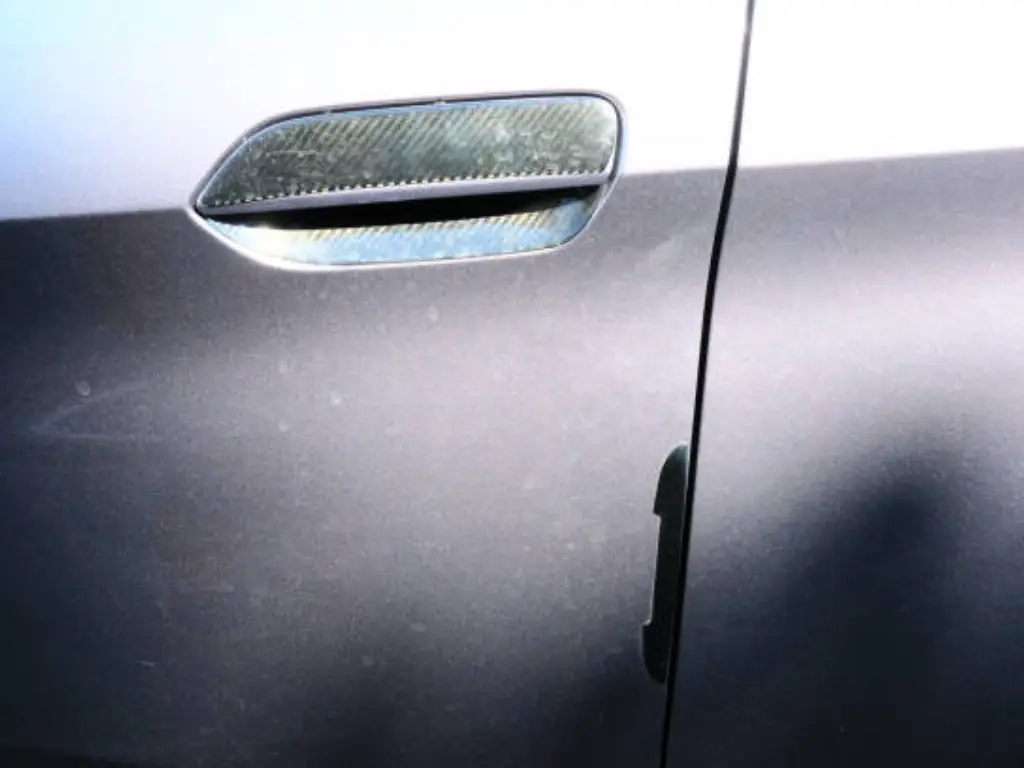
Maintenance & Care: Keeping Them Pristine
It is essential to keep a satin black or matte black finish looking pristine and this is very different to looking after a traditional glossy paint. Failure to attend to these special needs may easily result in an unpleasant appearance. This is not only cleaning, but also maintenance of the special texture and play of light.
The golden rule of satin and matte finish is: no wax, no polish, and no abrasive chemicals. The ingredients in traditional products add gloss, which will destroy the non-glossy appearance to leave blotchy, uneven spots. Rough degreasers or chemicals will remove the special texture of the finish, and may leave permanent stains.
Hand washing is the most important when cleaning on a daily basis. Do not use automated car washes as they may cause swirl marks. Wash with a special, pH neutral car wash soap designed to be used on matte or satin finishes (no waxes/silicones). Use two-bucket technique and soft microfiber mitt to reduce grit transfer. Wash, part by part, and rinse.
It is important to dry to avoid water spots, particularly on dark non-reflective surfaces. After rinsing, blot dry with a clean, soft microfiber drying towel. Avoid rubbing. Spot cleaning requires attention: clean bird droppings, insect splatter, tree sap, and fuel spills as soon as possible. These are acidic and may permanently etch or stain. Apply a matte/satin quick detailer with a clean microfiber. Prolonged contact with wetness containing pollutants may also be harmful. Life span is also increased by protection against excessive sun exposure.
Cost & Investment: Value Over Time
When it comes to a satin black or matte black finish, the question always comes up to cost and investment. This is not only the initial outlay but also the long term value, possible savings and effect on resale.
A full vehicle wrap can cost between 2,000 and 6,000 dollars or more depending on a number of factors: quality of the material (premium brands are more expensive but more durable), size/complexity of the vehicle (bigger, more complex cars cost more), experience of the installer (skilled shops charge more to do a perfect job and guarantee the work), and location. In case your original paint requires repair, that increases the cost.
In most cases, the cost of the material of satin black vinyl and matte black vinyl of the same manufacturer is very close; the difference in price is often caused by a particular line of products, but not by the type of finish. The price of the matte vs satin material is not a determining factor of the total cost.
Look at the long-term value: Wraps are a sacrificial layer, keeping original paint free of chips, UV fading, and environmental contaminants, keeping it in good condition in case of resale. This may make your car more appealing to the buyers. Although a wrap does not directly increase resale value, a perfect paint job under it definitely does. Wraps maintenance is different: you do not have to wax/polish, but you have to use special cleaning products. Small wrap damage may cost less to fix than repainting a panel. Lastly, the personalization itself is a pride of ownership investment. Failure to maintain, however, may result in expensive re-wrapping or hard removal in case the wrap wears out too soon.
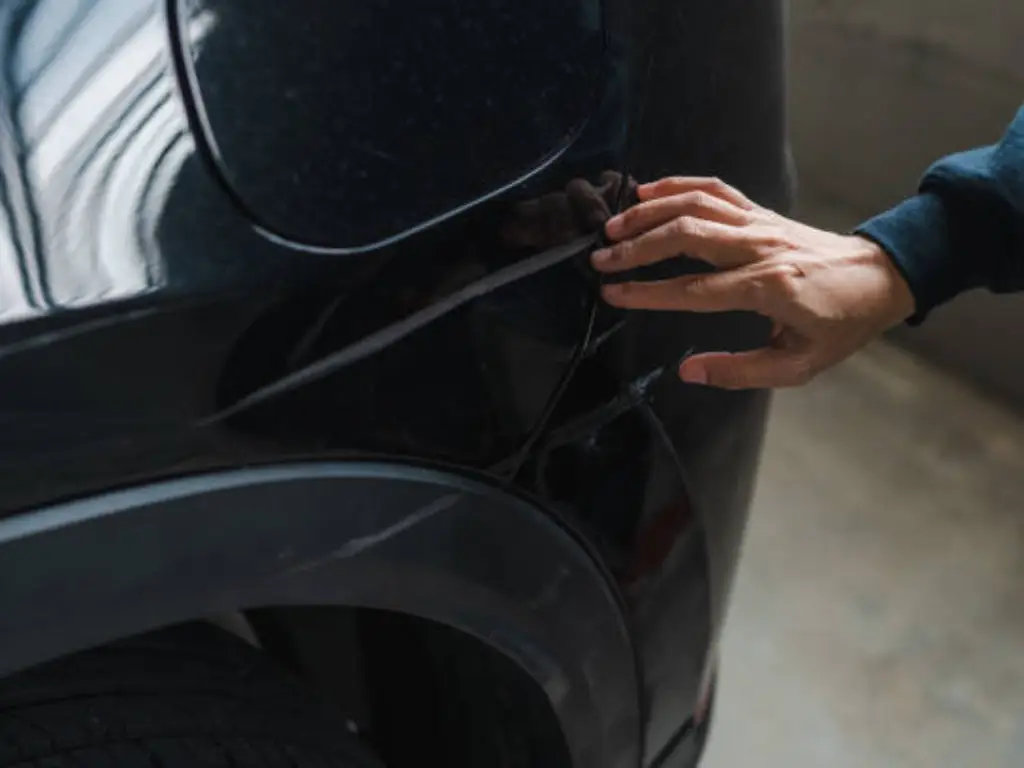
Which Finish Wins: Your Ride, Your Choice
| Comparison Aspect | Matte Black | Satin Black |
| Visual Style | Ultra-flat, non-reflective, industrial and raw look | Smooth, low-gloss sheen with a touch of luxury |
| Light Reflection | Fully diffused reflection (<10% reflectivity) | Balanced mix of diffuse and mild directional reflection (25–40% reflectivity) |
| Aesthetic Effect | Highlights sharp lines; emphasizes a flat, silhouette-like appearance | Accentuates curves; adds subtle depth and fluid highlights |
| Durability | Hides minor scratches well; attracts oils, fingerprints, and grime | Easier to clean; more likely to show scratches due to slight sheen |
| Maintenance Needs | Requires hand wash with matte-safe pH-neutral soap; no wax or polish | Same care as matte; slightly easier to maintain due to smoother surface |
| Longevity | 5–7 years with proper care; UV and scratch protection | Comparable lifespan with similar protective qualities |
| Cost | Material cost similar to satin; total cost varies by vehicle size and installer | Material cost similar to matte; no major difference in base price |
| Style Personality | Bold, minimalistic, aggressive; ideal for stealth and statement | Refined, contemporary, sophisticated; perfect for luxury with edge |
| Resale Value Impact | Doesn’t increase value directly but protects original paint for better resale | Same resale benefit as matte; preserves paint quality underneath |
Having dissected the details of appearance, reflectivity, durability, maintenance, and cost, we come to the most important question: Which finish is the real winner? The clear-cut response is that there is no one champion. The win goes to the finish that best suits your vision, your lifestyle, and the character of your vehicle. It is not a contest of natural superiority, but a scale of taste.
Choose Matte Black if: You want a statement that is bold, aggressive or stealthy. You value purity of form and sculptural lines, free of reflection, or you like minimalism. You are used to thorough cleaning to avoid oils and smudges that are visible. Your car is a sports car, muscle car, off-roader or a heavily modified tuner that is all about raw power.
Choose Satin Black if: You want a classy combination of style and contemporary cool with a hint of glamour. You want a finish that enhances curves with dramatic play of light. You want a surface that is a bit more forgiving with a few dust/fingerprints, or you want a high-end exclusive look. Your car is a luxury sedan, grand tourer or sophisticated sports coupe where subtle luxury is the order of the day.
Think about your driving conditions: a lot of dust or a lot of contact points may make matte difficult. Assess your maintenance promise: matte requires attention. To get real-life examples in various lighting conditions, visit a local wrap shop. Your vehicle is a part of you and the end you select is its mouth. Make your taste the real winner. Choosing the appropriate finish is a way of matching the exterior of your car with its real intention.
Elevate Your Look: Final Thoughts & Pro Tips
The decision to use satin black or matte black is not just a choice of color, but rather a creation of an identity. It is a chance to really upgrade your appearance, making your car a unique piece of art. The knowledge about their nuances, properties, durability, and maintenance will help you make a decision that will be both breathtaking and suitable to your lifestyle.
As you finalize your decision, here are some professional tips to ensure your chosen finish wins on your ride:
- Visualize Before You Finalize: Look at real-life examples of both finishes on real cars in different lighting situations. Note the way light falls on surfaces and balances various body lines. There are stores that provide digital renderings.
- Prioritize Professional Installation: Perfect performance is the key. Find quality stores that have certified installers of such difficult finishes. Their professionalism guarantees durability and a flawless look, which eliminates such problems as bubbling or peeling.
- Invest in the Right Care Products: Buy recommended matte/satin specific cleaning and detailing products before you drive away. Applying the wrong products is the fastest way to destroy the finish and even warranties.
- Consider Accent Pieces: Add contrast to your selected black by using gloss black wheels, chrome delete, or carbon fiber accents. Such textural contrasts create unbelievable depth and visual interest, and your vehicle will be really unique.
- Understand Long-Term Commitment: Wraps are a big commitment (usually 5-7 years). Expect special care and possible professional removal or re-wrapping. Regular, light cleaning will greatly prolong the life and beauty of your selected finish.
- Join the Community: Participate in online forums or local car groups. The matte or satin wrapped owners provide priceless real-life tips and product suggestions.
Finally, satin black and matte black are both a strong option to change your car. The decision is a matter of personal taste and convenience. With a well-informed choice and a promise to take good care of it, your selected finish will not only win the beauty contest, but it will keep making your ride even more special, making each trip a statement. What black will ride in?
Read more:


